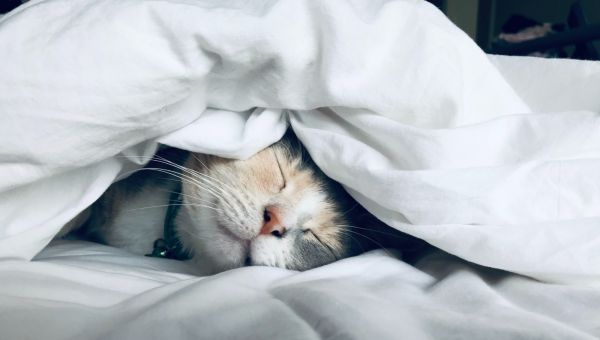Whatever you call them – sheets, bedsheets, bed linen – how they have changed over the years, from basic plain flat one-size-fits-all white cotton, to flat in numerous widths and colours, fitted bottom sheets for various depths of mattresses, and of course, duvet covers and pillow slips, but the fabrics now available are amazing, and each one is unique.
Apparently, there are four types of cotton, all slightly different – upland cotton, native to Central America, Mexico and the Caribbean - extra-long staple cotton (known as ELS) native to tropical South America, - tree cotton, native to India and Pakistan, and Levant cotton, native to southern Africa and the Arabian Peninsula.
Egyptian cotton
The crème de la crème of sheets, and made from extra-long staple cotton, ELS. The threads are longer but smaller in diameter compared to other cottons, and have more threads per square inch. The density of threads makes it stronger, more luxurious to the touch, and lighter without affecting its breathability. It doesn’t produce as much lint as other cottons, and is less likely to ‘pill’ after frequent washings. You need to understand thread count - generally, the higher the thread count, the silkier the cotton will feel, so a count of 600 is about the best you can get, but anything over 180 will still feel good.
Percale
Cotton, but woven with a tight cross-cross weave, and has a crisp, matte feel that gets softer with every wash. Also made from ELS cotton, with a thread count of usually between 200 and 400, but should have a minimum of 180. Being made from ELS cotton makes them expensive too, especially if you select organic percale, which is made from cotton where no fertilizers or pesticides have been used, and these must have the Global Organic Textile Standard (GOTS) label to prove it. Percale is sometimes blended with other materials such as polyester, silk or bamboo.
Bamboo
This is something we see more of recently, keeps you cool in summer and warm in winter, but the process of turning bamboo into fabric involves extensive processing with chemicals, including sulfuric acid, which is dangerous for the workers making it, plus polluting our environment, so not as natural as you would think. Bamboo blends are common in sheets, so look for bamboo lyocell, which is made with non-toxic processes. Bamboo tends to shrink and wrinkles more than cotton, so may need special laundering. Bear in mind too, that bamboo is invasive, and when grown outside its native habitat it can easily take over indigenous species.
Polyester
A synthetic material, sheets made from polyester could be your new best friend, particularly a poly-cotton blend, easy to wash and no ironing!
Polyester is made from coal, oil and water, so not very eco-friendly.
Downsides are that polyester is not so breathable as pure cotton and absorbs grease, which will in time leave you with less than white sheets. Pure polyester sheets will be rough, but blends tend to be softer and more comfortable – and much more affordable.
Linen
People with allergies benefit from linen as it is a naturally cooling hypoallergenic material, great for ‘hot’ sleepers! They are stiff to start but do soften in time, but never become as silky-soft as cotton.
However, linen is bacteria resistant, ventilating, moisture absorbing and has evaporating capabilities.
Tencel
This is a branded material for Lyocell (see bamboo above) and is made from, of all things, wood pulp from trees, including eucalyptus. It is wrinkle-resistant and environmentally friendly, as leftovers are recycled and reused. Despite being durable, it is not so easy-care as cotton, as hot water and heat drying can cause damage, but a great choice for eco-conscious customers.
Silk and Satin
Silk will be cool, rich and perfect for adding more romance to a room! A natural fibre produced by silkworms, and as such, this is reflected in the price. Naturally hypoallergenic, and a great temperature regulator, but special care will be needed in its maintenance. Satin is a synthetic fibre with the feel of silk but without the hypoallergenic qualities - and probably half the price!















